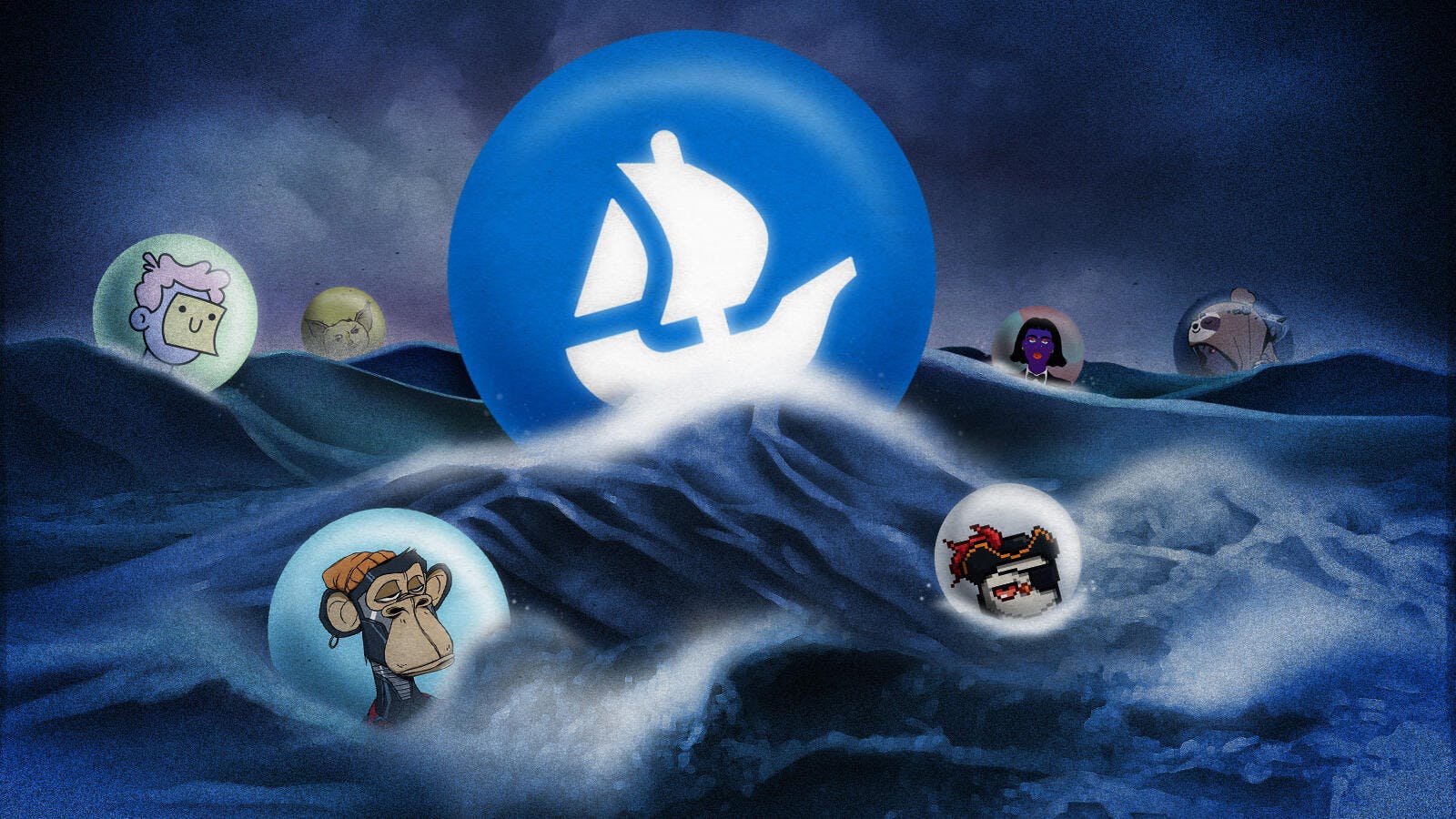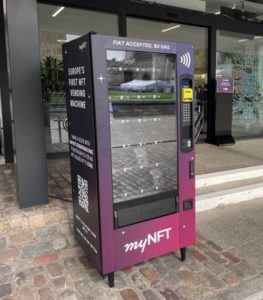Web3 Watch: New OpenSea Security Features and London’s NFT Vending Machine
DappRadar reported that the NFT trading volume in October decreased by 30% from September

Blockworks Exclusive Art by Axel Rangel
Art Gobblers became the talk of the NFT community this week after raking in over $20 million in the project’s first 24 hours on the Blur marketplace.
The Paradigm-backed collection also generated controversy for its association with Justin Roiland, co-creator of animated show Rick and Morty.
Instagram, meanwhile, said the social network plans to become an NFT marketplace as part of the Meta subsidiary’s plan to attract more users to the creator economy. Starting with a select group of US creators, Instagram will soon permit users to mint and sell digital assets directly.
Here are other notable stories that caught the eyes of the Web3 Watch.
Europe’s first NFT vending machine in London
The 2022 NFT London conference kicked off this week with a neon-purple NFT vending machine greeting attendees outside of the Queen Elizabeth II Centre. Users can pay 10 British pounds ($11.37) for an NFT that could be worth up to 1,000 pounds.
 Photo by Ornella Hernandez for Blockworks
Photo by Ornella Hernandez for BlockworksCustomers select an envelope within the display and key in the code provided like any other vending machine. After payment has been made via Apple Pay, Google Pay or credit card, customers receive an envelope that contains a QR code on it. They either use an existing wallet to receive their NFT or set up a new one.
Supported NFTs include the projects Dr. Who Worlds Apart, Thunderbirds, and Delft Blue Night Watch.
The proceeds from the vending machine will be donated to charity in a split between Giveth, an organization that funds services and education in developing nations, and Roald Dahl’s Marvellous Children’s Charity.
Back in February, Solana blockchain-based NFT marketplace Neon set up the first NFT vending machine in New York.
NFTs by the numbers, DappRadar report
DappRadar’s latest industry report found NFT trading volume in October decreased by 30% from September to $662 million — the lowest monthly volume yet this year.
While Ethereum and Solana recorded the steepest declines, Polygon’s trading volume and sales increased by 770% from September, likely driven by the success of Reddit’s NFT collections. Polygon and BNB Chain also increased their sales count by 60% over the same period.
Even still, competition between NFT marketplaces has increased. Newcomer Blur launched in October — with at least $14 million in funding from venture capital firm Paradigm, plus additional unspecified backing from NFT-native investment fund 6529 and digital art collector Cozomo de’ Medici.
The hype surrounding Blur was in large part due to the overnight success of the Art Gobblers project. After four days on the market, the collection has an ether (ETH) volume of $61.9 million at the time of publication.
Nevertheless, OpenSea maintains its nearly 50% share of the entire market. In October, OpenSea marketplace dominance decreased by 8.3% compared to August, and NFT trading volume decreased 12.1% ($313 million) month over month — the lowest trading volume registered since July 2021.
OpenSea’s new anti-theft features
As the largest NFT marketplace, OpenSea also typically has the greatest number of scams and thefts. It’s now turned its attention to address the challenge and introduce a new system in a bid to ward off bad actors.
OpenSea can now proactively scan URLs shared on its platform against a blacklist of known malicious sites. It can also analyze interactions and transactions with new URLs to identify malicious behaviors such as signature farming and wallet draining. OpenSea will suspend accounts of known scammers.
The marketplace’s second update aims to stop additional resales of potentially stolen digital items. It hopes to start training the system to more effectively detect NFT theft.
OpenSea’s goal, according to a company blog, is “to help make the ecosystem safer by reducing the downstream sales of stolen items – both using OpenSea and elsewhere in the NFT ecosystem – and thus reduce the incentive for NFT theft in the first place.”
Y00ts NFT images ‘finally’ revealed
After nearly two months, creators of the Solana collection “y00ts mint t00b” have revealed the project art. Those who purchased a t00b, essentially a vial, can burn it to mint a y00t NFT.
Dust Labs, the company behind the project, never gave a reason for the delay. But in early October, one of the artists from the popular DeGods collection and y00ts departed from the project. He tweeted that he planned to focus on 1:1 art space instead of PFPs.
Holders have been sharing their new NFTs to crypto Twitter. One user commented that she is “finally y00ted,” and others claimed that it was worth the wait for some “amazing” art.
The collection — a total of 15,000 NFTs — centers around a sheep avatar. Dust Labs plans to experiment with a new model of copyright and intellectual property (IP) licensing.
The NFTs’ IP rights aren’t specific to one holder. Rather, the rights will exist in a registry where anyone who is approved to use an NFT’s IP is publicly known. It will use the ⓨ symbol instead of the standard ⓒ copyright symbol.
Get the news in your inbox. Explore Blockworks newsletters:
- The Breakdown: Decoding crypto and the markets. Daily.
- 0xResearch: Alpha in your inbox. Think like an analyst.






